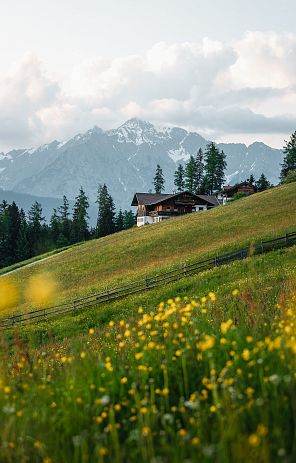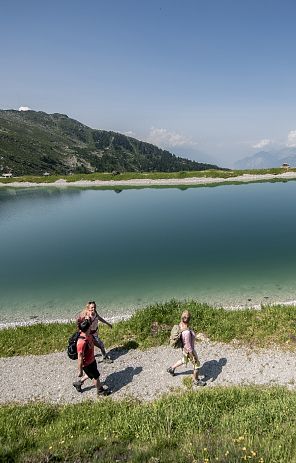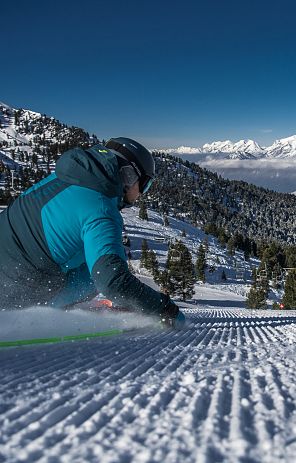Palm tree procession. Lived Easter custom
Cultural past comes to life!
If you are spending your Tyrolean vacation in the Hall-Wattens region at Easter, you should definitely see the palm tree processions in Thaur and Hall. The Hall-Wattens region has a rich cultural past - both in religious and secular terms. Especially in the countryside, many customs have been preserved and cultivated right up to the present day.
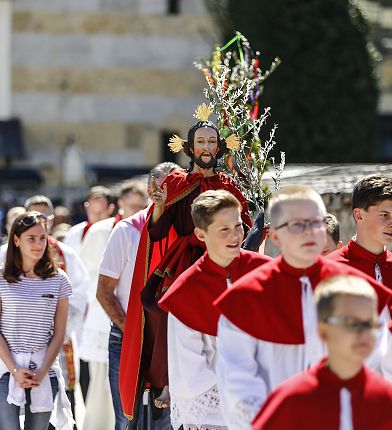
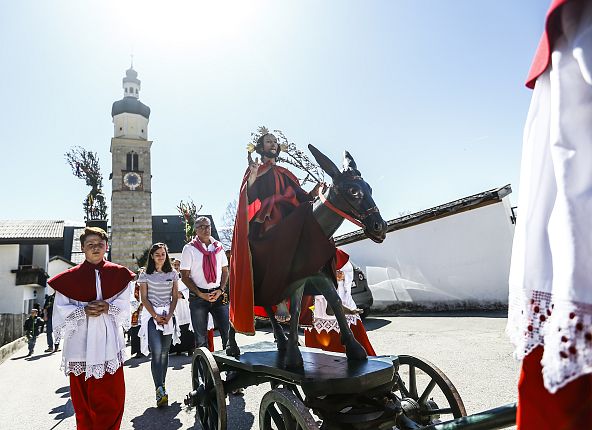
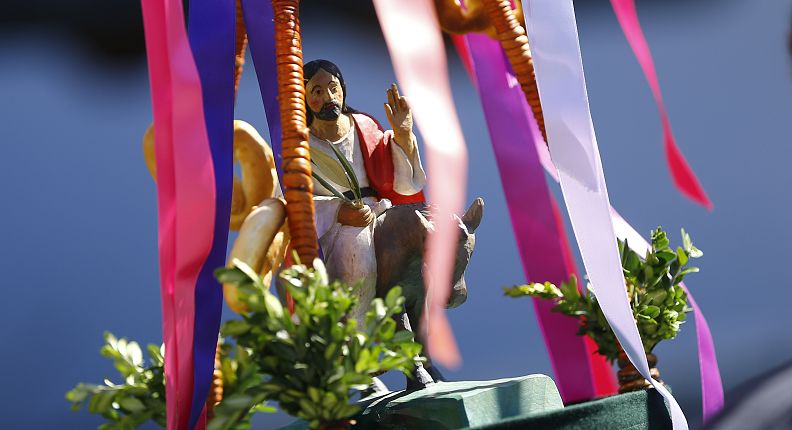
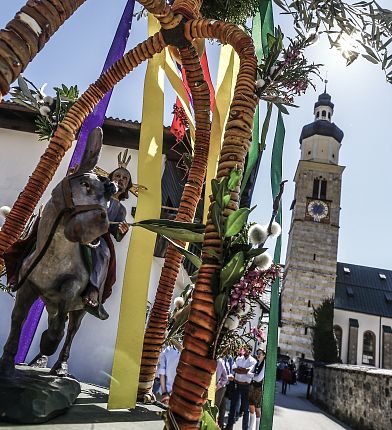
To depict the entry of Jesus into Jerusalem, the custom arose in the Middle Ages of carrying wooden palm mules with a figure of Christ sitting on them during processions. The palm-mule procession was suppressed, especially during the Enlightenment (Napoleonic era); its use as part of church celebrations was temporarily banned in many places. Today, however, a "Palmesel" is once again carried in many places in Tyrol as part of a festive procession with music, palm bearers and master craftsmen with their guild poles. Especially in Thaur and Hall in Tirol.
In the late Middle Ages, almost every village had its own palm donkey, which was carried in the palm processions to symbolize the entry of Christ into Jerusalem. These were often life-size donkey sculptures, often with a carved wooden figure of Christ on top. The procession with a palm donkey was once widespread throughout the Upper German-speaking area, but also in the Dutch and Belgian regions. People did not disdain to sit on a donkey themselves "in the footsteps of Christ". For example, in the first year after their election, the archbishops of Salzburg used to ride to the Nonnberg church on a palm tree - not on a plebeian donkey, however, but on a white horse.
According to a report from 1785, children in the Salzburg-Upper Bavaria region were allowed to ride on a live palm donkey until the consistory banned the "donkey festival". However, wooden donkeys were usually used, which were festively dressed up and pulled along in the procession on a cart with a figure of Christ on top. A very special and coveted processional donkey stood under the Nonnberg Gate in Salzburg at the beginning of the 19th century. The wooden animal was a real wonder that threw out figs and buck horns.
Most of these donkeys fell victim to the iconoclasm of the Reformation; the donkeys that survived the storm were banished by the Enlightenment at the end of the 18th century.
Thaurer Palmesel procession
The small village of Thaur in particular has made a name for itself with its tradition of crib carving, the Mullerlaufen during carnival time and the well-known palm procession.
The palm donkey and the Christ figure from Thaur in Tyrol are over 240 years old. This ensemble stands on a little cart that altar boys and girls pull in the procession from Thaur parish church to the "Romedikirchl" pilgrimage church, into the village of Rum and back to Thaur. During the procession, the figure of Christ holds a palm branch. The children of the village also carry palm bushes, palm sticks and small, wood-carved donkeys, while the band plays processional songs. The procession leads across meadows up to the small Romedi church, where a short prayer is held, then down to the parish church in Rum and back to Thaur after another prayer.
Palm Sunday in Thaur
PALM SUNDAY, COMMEMORATION OF THE ROYAL ENTRY OF CHRIST INTO JERUSALEM
Church offering for the Christians and the holy places in the Holy Land
8.30 a.m. Palm consecration at the Vigil Church, palm procession to the parish church,
9.00 a.m. Mass with the church choir
1.00 pm Palm procession to the Romedius church in Rum and back to Thaur along the country lane
If the palm procession cannot take place due to weather conditions, a prayer service will be held in the parish church at 5.00 pm.
Haller Palmesel procession
This custom has existed in Hall since the 15th century. The Haller Palmesel has a hollow belly and used to be filled with consecrated bread, which fell out during the procession through the cobbled streets and were collected by the children.
Palm Sunday Hall in Tirol
HOSANNA, HOSANNA, HOSANNA ON HIGH!
Palm Sunday marks the beginning of Holy Week. The Palm Sunday liturgy starts at 9.30 a.m. in the Upper Town Square with the consecration of the palm branches and the subsequent palm procession and entry into the church. In order to make the subsequent Eucharistic celebration in the church a little shorter, the abridged version of the Passion according to Mark will be recited.
All those who wish to consciously and calmly engage with the entire Passion story are invited to the Eucharistic celebration in the evening at 7 p.m. in the parish church of St. Nicholas.
